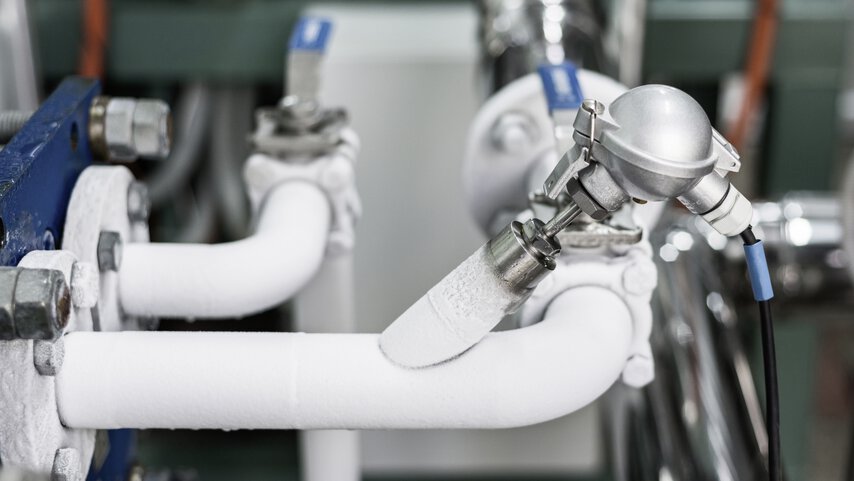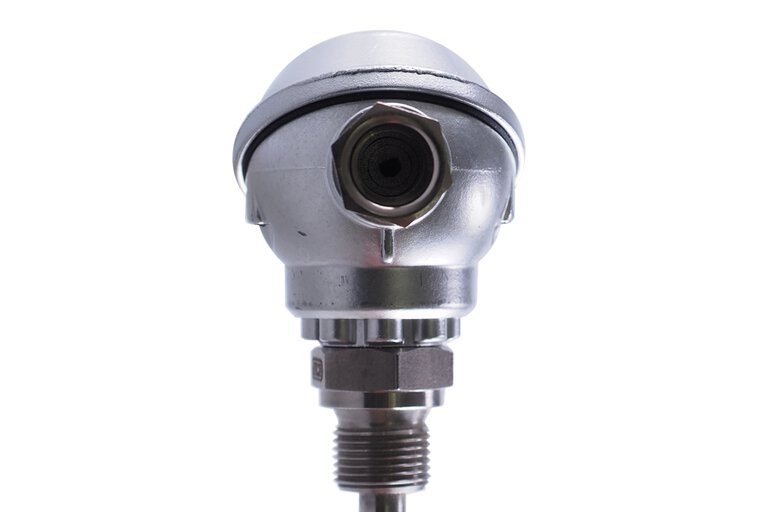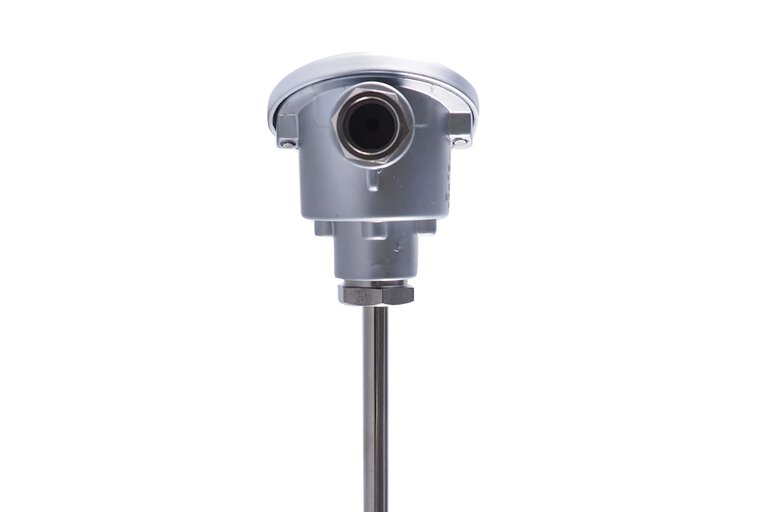

Pt100 vs Pt1000 – which sensor to choose?
Temperature is one of the basic technological parameters in production processes. One of the most commonly used devices for its measurement are resistance thermometers with Pt100 and Pt1000 sensors. They have similar characteristics, but differ significantly in their resistance ratings. What implications does this have in practice and how do you choose the right sensor for your application?
Resistance temperature detector
Resistive temperature sensors use the phenomenon of changing the resistance of the conductor from which they are made to measure temperature. In addition to these, semiconductor sensors (thermistors (NTC) and positrons (PTC) are often used in automation to measure temperature.
Pt - what does it mean?
Pt is the chemical symbol for platinum. In pt100 and pt1000 temperature sensors, it indicates the material from which they are made. Platinum is the most commonly used precious metal in sensors, followed by nickel (Ni100, Ni1000).
Temperature sensors Pt100 – characteristics
The Pt100 sensor is a resistance thermometer made of platinum with a resistance (resistance value) of 100Ω at 0°C.
| Pt100 table - temperature and nominal resistance | |
|---|---|
| -200 | 18,52 |
| -150 | 39,72 |
| -100 | 60,26 |
| -50 | 80,31 |
| 0 | 100,00 |
| 10 | 103,90 |
| 20 | 107,79 |
| 30 | 111,67 |
| 40 | 115,54 |
| 50 | 119,40 |
| 60 | 123,24 |
| 70 | 127,08 |
| 80 | 130,90 |
| 90 | 134,71 |
| 100 | 138,51 |
| 150 | 157,33 |
| 200 | 175,86 |
| 250 | 194,10 |
| 300 | 212,05 |
| 350 | 229,72 |
| 400 | 247,09 |
| 450 | 264,18 |
| 500 | 280,98 |
| 550 | 297,49 |
| 600 | 313,71 |
| 650 | 329,64 |
| 700 | 345,28 |
| 750 | 360,64 |
| 800 | 375,70 |
Temperature sensors pt1000 – characteristics
Pt1000 sensors are also platinum resistance thermometers. They differ from Pt100 in their resistance, which in Pt1000 is 100Ω at 0°C.
2-wire, 3-wire and 4-wire connection of the temperature sensor
The choice of connection type is influenced by the lead wire resistance, related to their length. The 2-wire connection is the most cost-effective, however, it can only be used with relatively short wires. The most expensive, but best resistance-compensating connection and guaranteeing the highest measurement accuracy is the four-wire circuit configurations. In practice, the 3-wire connection is the most commonly used.
Pt100 vs Pt1000 – similarities and differences
In the case of a 3- or 4-wire connection, there are no major differences between the Pt100 and Pt1000, as the additional wires and connectors compensate for the effect of the resistance of the leading wires on the temperature measurement. The price of both thermocouples is also similar. The choice between Pt100 and Pt1000 depends on other factors, such as:
Pt100 temperature sensors – advantages
-
Available in two versions: as a thin film sensor and as a wire sensor, which differ in the permissible measurement current and the operating temperature range. Pt1000, on the other hand, is only available as a thin-film version.
-
They are compatible with more instruments and processes because their use is more widespread.
-
They work very well in a 3- or 4-wire connection, as the electrical resistance of the measuring element is much lower than that of the Pt1000 sensor and is a smaller percentage of the total resistance measured in the circuit.
Pt1000 temperature sensors – advantages
-
Lower connection line cost, as they are connected with a two wire circuit configurations due to the negligibly small effect of resistance on the measurement.
-
More advantageous with longer lead wires - their lower resistance compensates for the errors associated with the higher resistance added to the readings when wires are few and long
-
Best choice for battery-powered applications because, due to their low resistance, Pt1000 sensors consume less power. This extends battery life and maintenance intervals, thereby reducing costs
-
Less self-heating, which means fewer errors due to ambient temperature
Pt100 vs Pt1000 – applications
When choosing a temperature sensor, you should also consider the application. The pt100 probe is used, due to its universality, in numerous industrial and commercial applications.
Resistance temperature detectors Pt1000 sensor is most commonly used in industries such as:
-
refrigeration
-
heating
-
ventilation
-
automotive
-
mechanical engineering

The Pt1000 probe is used, among others, in the ventilation industry
JUMO resistance sensors
Now that you know how to select a measuring element to meet the requirements of your application, it is time to buy. With a wide range of protective tube materials, variants and process connection types, JUMO resistance sensors will meet all your requirements. Contact us - our representatives are waiting for you!
Examples of our devices:
Sensor Pt100
Screw-in resistance temperature sensor with J-type head
Sensor Pt1000
- ${title}${badge}



